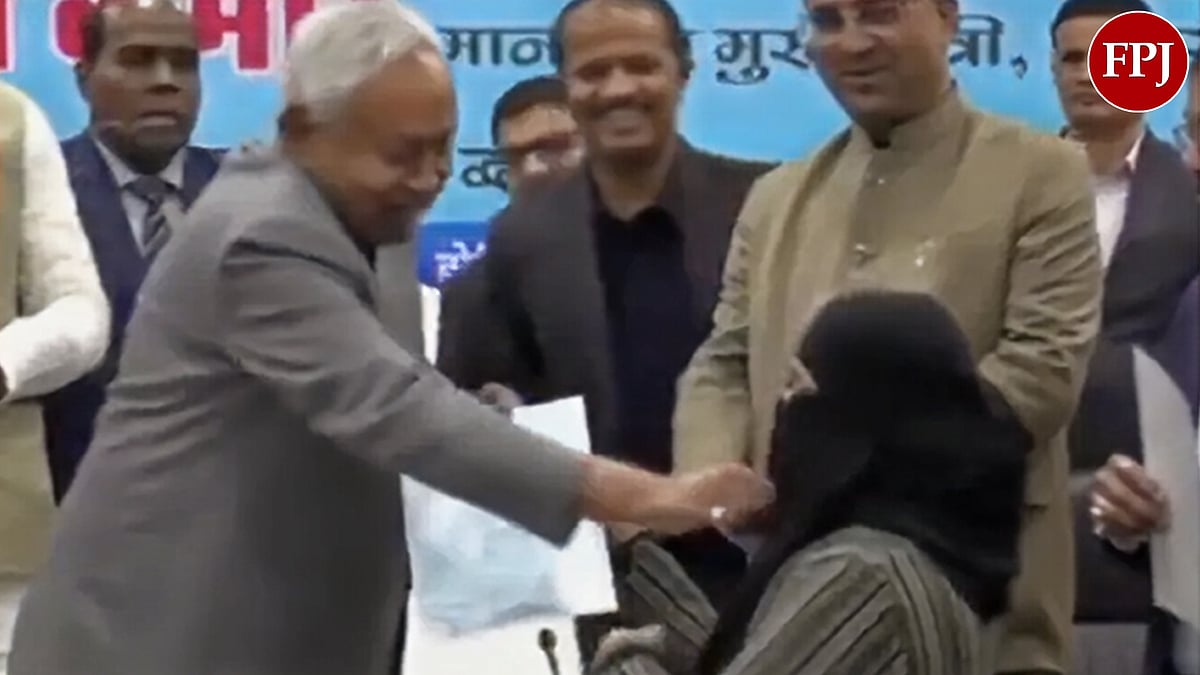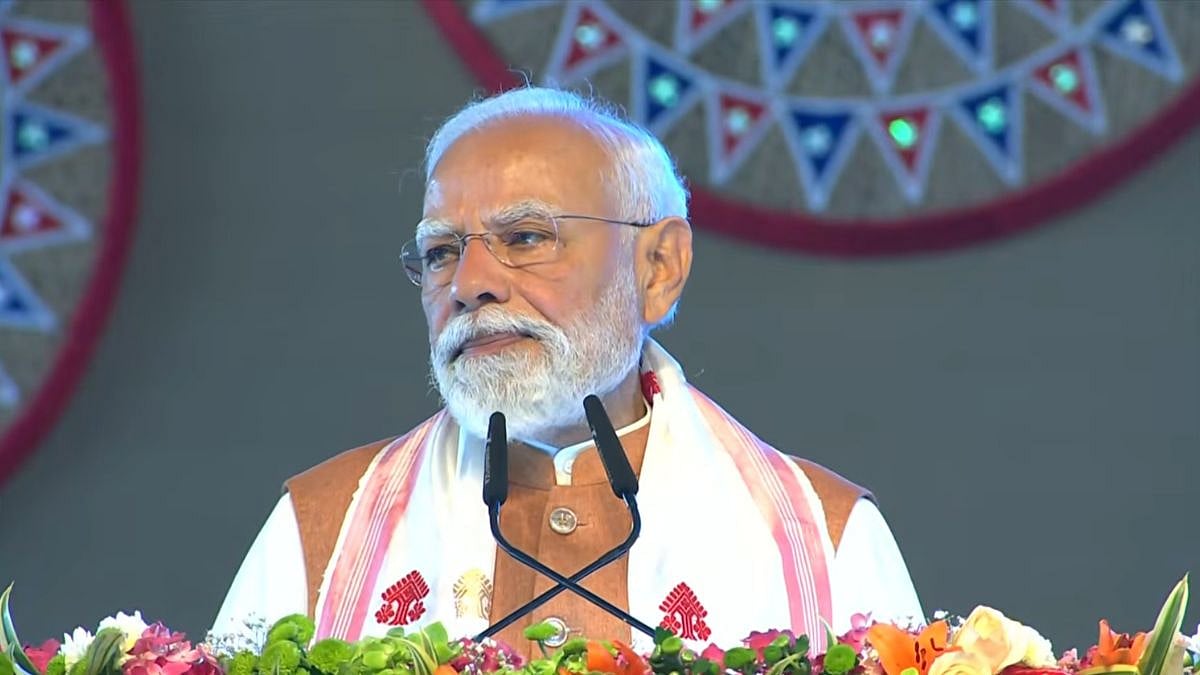When it comes to gold, politicians, government officials, media and the general public can be quite misinformed to the point of hysteria.
Consider how – on 21 February 2020 -- an unsuspecting public lapped up media announcements about the discovery of a huge gold find.
The announcements were made both in print and on television. They talked about a sensational 2,900 tonne gold reserve being found in Uttar Pradesh’s Sonbhadra. Television anchors, in keeping with sensationalism, pegged the ‘discovery’ a bit higher – at 3,500 tonnes.It took a couple of days for people to realise that all this information was “rubbish”.
The original information was attributed to government-owned Geological Survey of India (GSI) and the UP geology and mining directorate. Both organisations had to issue retractions and denials some 48 hours later.
Somehow, people often forget that finding gold is not that easy. As MisesIndia, Austrian Economics, Freedom and Peace puts it, “Finding a gold mine is an extremely long and arduous process. It takes years, often decades, to define resources to put a gold project into production. It is then that it is called a mine.” You can fast-forward fake news and myths, not the mining process.

And notwithstanding government claims that gold can be found, India has discovered no single mine since independence. The two mines that operated in India – the Kolar gold mines and the Hutti gold fields were ancient mines that were further developed. Of the two, Kolar has closed, and has become a ghost town (you can download a collection of visuals here).
Dog in the manger
Had the government been sagacious, it could have done at least two things right away.
It could have given the ghost town to some private player to redevelop. See how Canada revived an old limestone quarry (see pic).

Or it could have auctioned off the residual ugly mountains of residual ore (known as gold tailings) which lie around. Auctioning gold-tailings or dilapidated plants is different from auctioning prospecting. Gold tailings attract gold miners because what was once considered waste ore continues to have some gold that older techniques could not extract profitably.
Instead, the government neither beneficiates the ore itself, nor allows anyone else to do so. It does not revive an old mine, nor allows others to do this as a paid-for-access sanctuary. It just allows ugly mountains of ore – or ghost towns -- to remain eyesores. Nobody profits. Everyone loses. Another potential for wealth generation lies abandoned.
That is where the government’s exhortations ring hollow, even mocking -- atma nirbharta, make-in-India, Swachh Bharat, ease-of-doing-business. The biggest stumbling block remains the government official. He is neither capable of improving things himself and is suspicious of others who can. As a result, India and the gold mining industry suffers. The government has almost driven it to extinction.
Stunted India
Says a geologist, “India must accept that since 1947 it has failed to develop its mineral wealth on a par with countries like Australia and Canada, and also countries like Sudan, Ghana, Tanzania, Zambia, Angola and the list goes on, who are way ahead of India in gold production -- all due to its mineral exploration policies.”
Adds Charles Devenish, chairman, GeoMysore, “Kalgoorlie in West Australia happens to be a twin of the Kolar Gold Mine; both mines were started nearly at the same time. Kalgoorlie is now booming and Kolar has become a graveyard of depression, degradation, and un-employment. The cause was simple – it was as a direct result of the maximizing of taxation and the bleeding of revenues back to the State. No money went back into mine development or exploration along the 80 km geological belt, which today if permitted by the Government will host a number of new gold mines.” India has been exceptionally good at making vultures out of everyone – its bureaucrats and its legislators.

Today, Kalgoorlie is a cluster of gold mines collectively producing just over 20 tonnes of gold each year. Each cluster produces between 1-2 tonnes – quite similar to what Kolar gold fields used to produce. But each small gold mine in this cluster has changed hands time and again. Today, the gold mining district is humming with activity. There is no talk of the mines closing. If an old investor wants to hang up his boots a new one comes along. New players, with new strategies and timelines, have continued to breathe life into these mines, unlike India, with just one owner, with limited strategy and expertise.
Lost potential
As a result, some of the best explorers in the world are people who have worked on Australian mines (in addition to other mines elsewhere). Indian explorers work alongside such experts, and work on gold mines in other countries. They could work in India too. If the environment for growth were there.
The fact is that as much as US$ 2.166 billion was the domestic capital outflow during 2016 for 26 mineral related deals, according to estimates compiled by FIMI (Federation of Indian Mineral Industries). By not being able to work on a sensible policy on mining of precious metals, India was compelled to import nickel, rare earths and other precious metals meant for defence and strategic projects. Devenish wrote to the defence ministry in January 2017 but, as always, got no response.
And it is worth listening to what Jayant Bhandari, analyst and columnist has to say, “Mining depends on massive local value-addition, leaving most of the revenue in the host country. In fact, mining as a sector - going against economic logic - invests more than what [it] ever gets out in profits from operations. This happens because of people investing in mining as speculation, to hedge against commodity prices, and for leverage. The end result is that mining investment, if done in the policy environment with externalities accounted for, might be the best investment for a society.”
He further explains how even a small mine employs thousands of people, in mining, geological work, security, safety, engineering, maintenance, etc. The training and education that such an industry imparts on the society has a huge future value. India desperately needs to skill its manpower. Mining still offers a great opportunity.
This is what the government forgets. By not allowing mining to grow, it has lost much more money itself. As a result, the taxpayer became poorer -- because the government has always excelled in spending money (wisely or otherwise can be debated) but does not know as yet how to let people grow money and generate wealth. It has left India poorer, allowing even countries like Bangladesh to sport a higher per capital GDP than India. It is also not surprising that this has led to almost every neighbouring country (with the sole exception of Pakistan) to score higher than India on human development and human capital.
The biggest risk is government
Worse, the government itself refuses to give to investors a comprehensive list of regulations. New regulations from the state and centre keep popping up. The unpredictability is unnerving and extremely annoying. And the ghost of regulations with retrospective effect has not yet been exorcised. That is the crux of disputes with Vedanta, Vodafone, and Devas Multimedia.
Says another geologist, “Layers and layers of confusing regulations exist. You could explore projects but could not sell them for profit. You were not given the first-right to take your project forward either. Your reconnaissance permit could not be transferred to an exploration permit, and the exploration permit could not be transferred to a mining permit. Everything depended on the pleasure of the bureaucrats-in-charge.”
Devenish stated as much to Arvind Subramaniam, then-Chief Economic Adviser, government of India on, 31 May 2017: “It is generally agreed by geologists that as much as 95% of a valuable hoard of gold, copper and other metals and minerals lies buried throughout India, awaiting discovery. The Indian landscape is littered with depressions and shallow shafts that are evidence of ancient shallow mining for gold and copper thousands of years ago. Unfortunately, the New Minerals Exploration Policy (NMEP) announced a few months ago and the 2015 amendments to the Mining and Minerals Act only made the search for deeply buried minerals more difficult, not less” (also read this).
He goes on to explain how the 2015 Mining and Minerals Act came up with something far worse – the compulsory auctioning of licences.
The government was obviously not deterred by the fact that none of the government agencies succeeded in discovering a single new commercial and proven deposit of gold, platinum, nickel, or diamonds during the past 70 years. The two significant new gold mines that have been discovered recently are by private companies, the first in almost 2,000 years (The famous Kolar and Hutti gold mines were developed on resources discovered by the ancients.)
Geologists say that government orgnisations like Geological Survey of India (GSI) and Mineral Exploration Corporation Ltd (MECL) which are being pushed forward by the government to control exploration and mining should confine themselves to gathering and collating geological data from a regional perspective and make it publicly available. Leave the rest to gold prospectors.
Other voices
The government must overcome its reluctance for sharing information with the public. It should leave prospecting to prospectors. It will attract investments and save the exchequer from losing thousands of crores of rupees – governments are supremely inept at exploration compared to private players who understand how to cope with risk better. This is a successful formular that is being used in almost all countries -- Australia, Canada, South America, and Africa are good examples.
Mining, say experts, has the potential of reducing rural poverty rural poverty in India by as much 50% within 10-15 years. This will however require the full support of the fertilizer companies, farmers, mining companies and the governments. At the same time, it requires the government from staying away from micromanaging businesses or being a damp squib saying no to any proposal that seeks to enhance community wealth.
It is obvious that the government wants to maximise its own investment coffers through taking upfront payments for discovered deposits when the mines are auctioned. But it is a move which could actually backfire, leaving India at least two centuries behind from where we currently are in respect of gold mining at least.
Global consulting group McKinsey has observed that without “accelerated growth in mining” India will rely heavily on imported raw materials to supplement local supply into its manufacturing sector, with increased forex spending on thermal coal, coking coal and iron ore alone reaching an estimated $58 billion, “a staggering 180% of today’s current account deficit”. It believes that “The mining industry could contribute an additional US$125 billion to India’s output and $47 billion to India’s GDP by 2025.”
Bhandari is not amused. “In a very Orwellian sense this is good news for the international commodity prices. India … is incapable of ramping up its mining output. In fact, over the last 15 years when the world was rapidly ramping up its commodity production and increasing its exports to China, India was turning it down. . . . . there are simply no institutional capacities in India that make the ramping up of production of commodities possible. It is for this reason that despite having among the largest coal reserves, India imports from Indonesia and Australia, and these imports are growing.” He then adds, scathingly, “Doing business in India is impossible enough, mining is much more difficult. . . . Corruption, planning, and confused thinking is part and parcel of public servants in India. Would you give advance payment to India for minerals? I can think of no sane company that will do so.”
Moreover, as these columns pointed out recently, many of India’s plans are far too ambitious to achieve. As economist Madan Sabnavis put it, India wants to be a $5 trillion economy. That comes to around Rs. 375 lakh crore of GDP. That would require 30% of this number – or Rs.110 lakh crore — to be investment on an annual basis. Today, even if $100 billion comes in as FDI, it amounts to just Rs 8 lakh crore — it is a small proportion of Rs 110 lakh crore.
India will have to change its policies, recalculate its numbers, and trust the private sector a lot more than it has done all along. More importantly, it should stop behaving like the local village contractor, who wants all his risk money to be paid upfront before doling out contracts. It may work for a village. It does not work for a country. And certainly not for gold mining.
The author is a consulting editor with FPJ.











